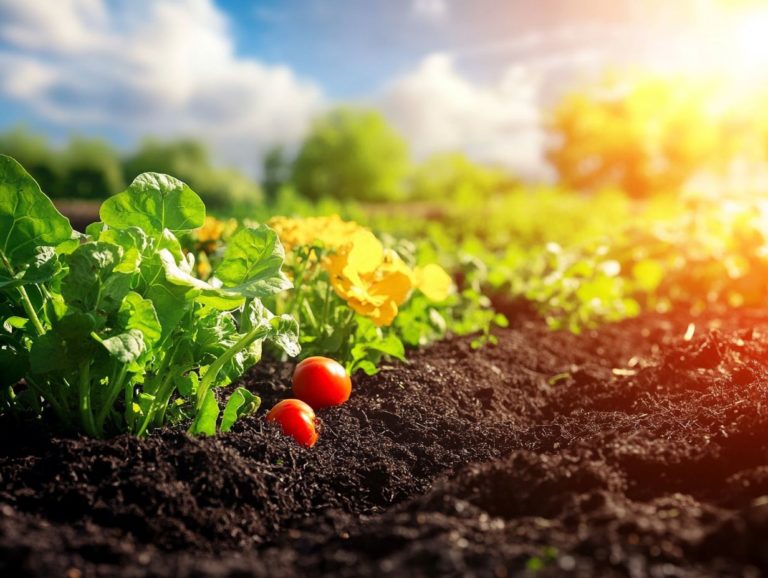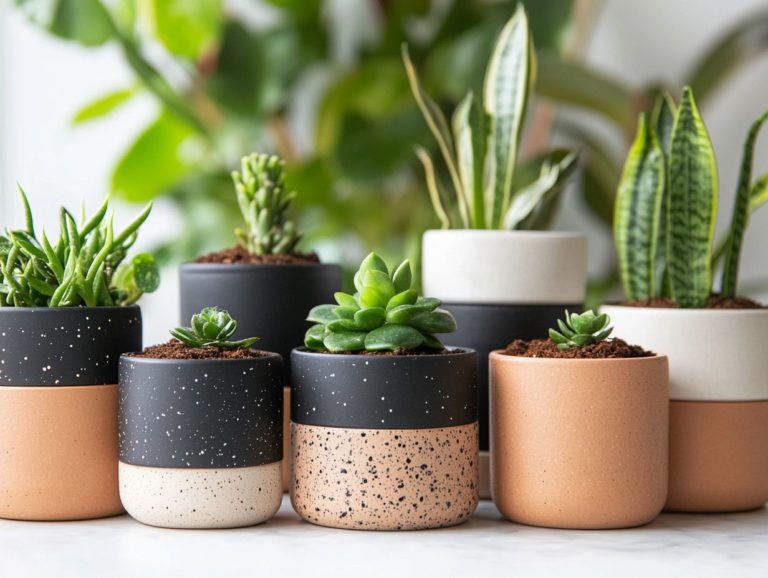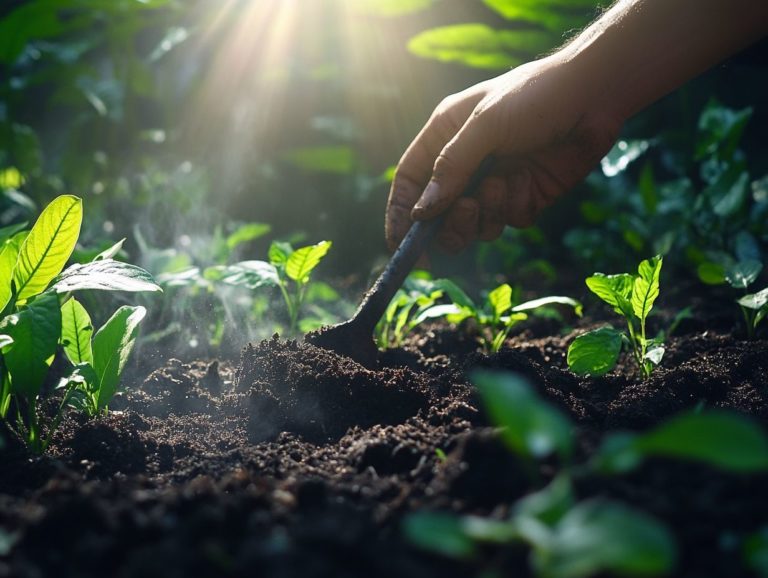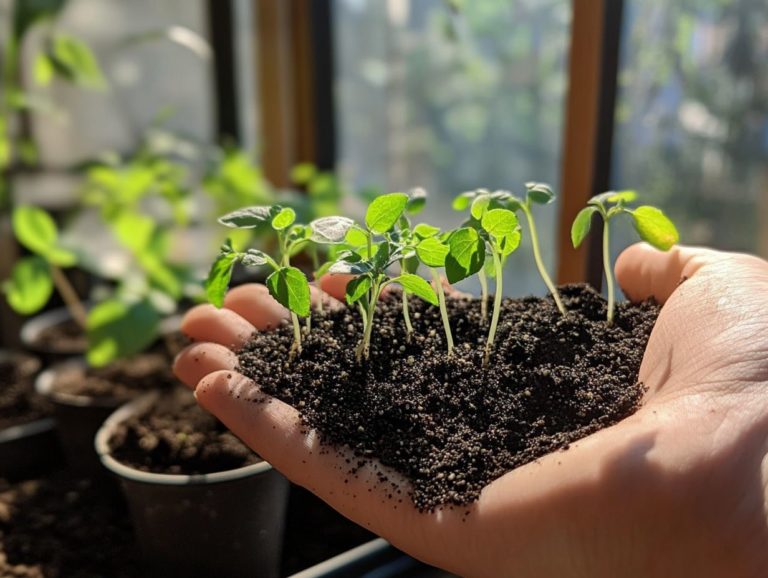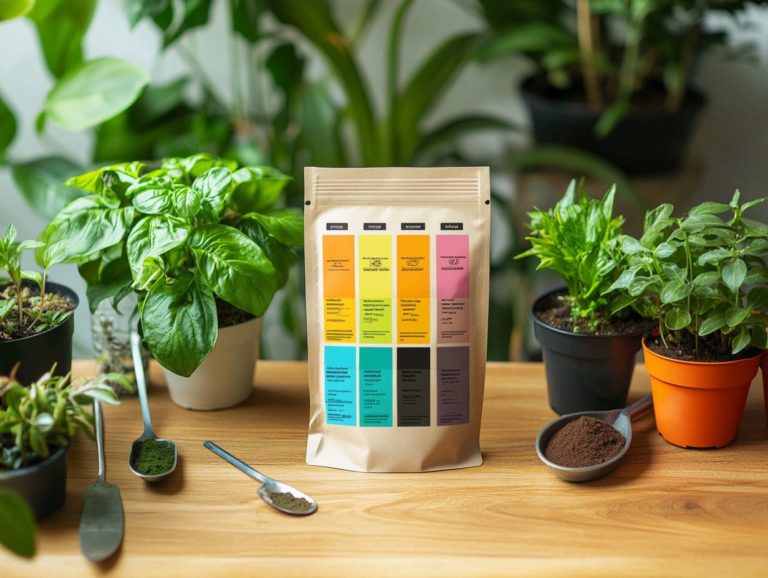How to Create a Soil Moisture Meter
Soil moisture is essential for the health and growth of your plants, yet it’s often underestimated by many gardeners.
Grasping the art of measuring and managing soil moisture can truly elevate your gardening experience. You ll discover a range of soil moisture meters, learn how to craft your own DIY version, and explore best practices for obtaining accurate readings.
Whether you re just starting out or have years of experience under your belt, this guide will provide you with the insights needed to boost your plants’ vitality.
Get ready to dive in and unleash your inner gardener!
Contents
- Key Takeaways:
- Understanding Soil Moisture
- Explore Your Options: Types of Soil Moisture Meters
- Materials Needed for DIY Soil Moisture Meter
- Step-by-Step Guide to Building a Soil Moisture Meter
- Using and Maintaining Your Soil Moisture Meter
- Alternative Methods for Measuring Soil Moisture
- Frequently Asked Questions
- What materials do I need to create a soil moisture meter?
- Can I use any type of resistive soil moisture sensor?
- How do I connect the sensor to the microcontroller?
- Do I need to calibrate the soil moisture sensor?
- How do I power the soil moisture meter?
- Can I use the soil moisture meter for different types of plants?
Key Takeaways:
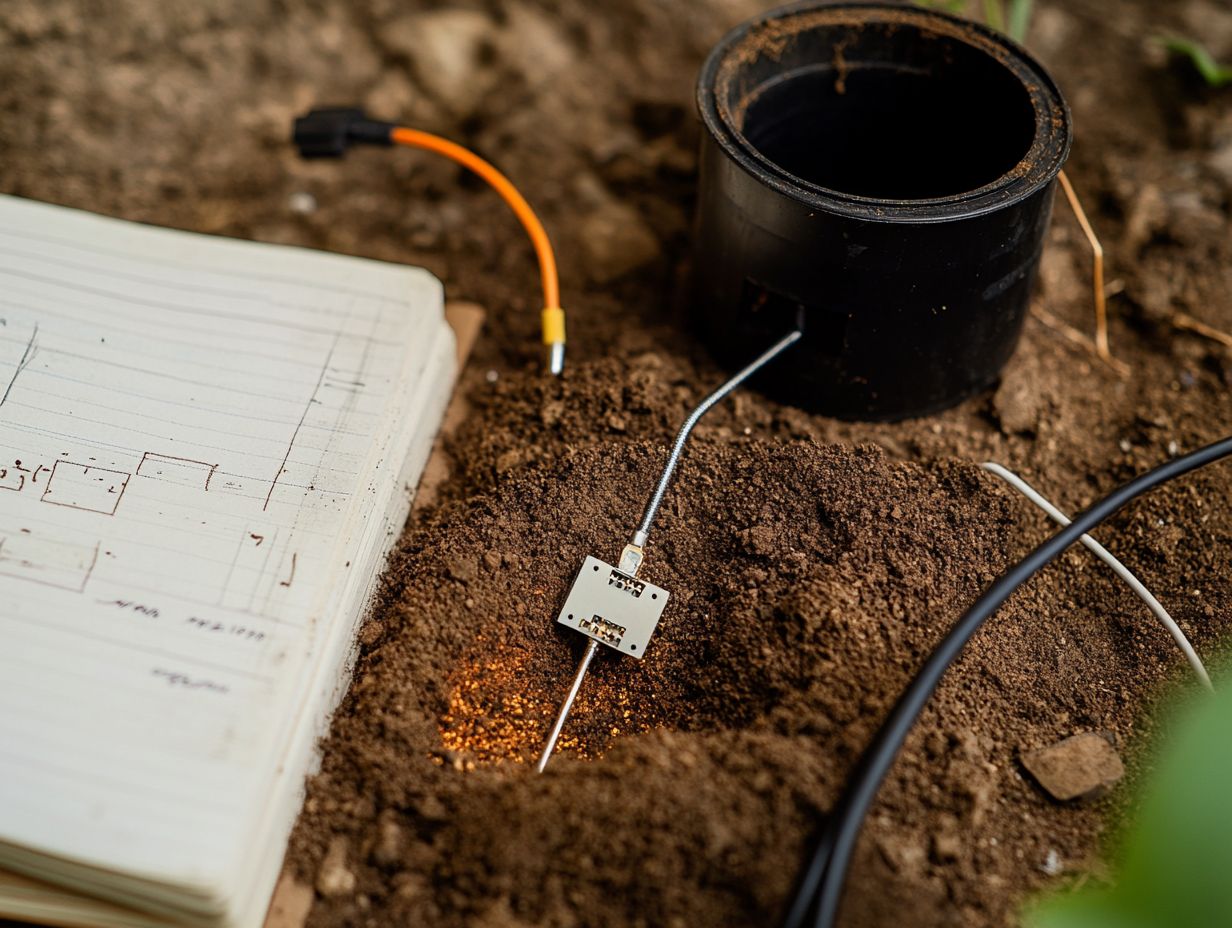
- Proper soil moisture is crucial for healthy plant growth.
- DIY soil moisture meters are affordable and easy to make with basic materials.
- Regular maintenance and following best practices can ensure accurate readings with your homemade soil moisture meter.
Understanding Soil Moisture
Understanding soil moisture is essential for your gardening and agricultural success, as it directly influences plant growth, health, and yield. By keeping a close eye on moisture levels, you can manage irrigation more effectively, ensuring your plants receive just the right amount of water avoiding over-saturation that could lead to root rot and other complications.
With the latest technology at your fingertips, tools like soil moisture sensors, including capacitive soil moisture sensors (which detect moisture levels using electrical signals), have become essential for both novice gardeners and those using automated farming tools. To ensure you’re watering effectively, learn how to test soil moisture before watering. These devices deliver real-time data that enhances environmental monitoring and optimizes growth conditions, setting you up for flourishing results.
Importance for Plant Growth and Health
Soil moisture is critical for plant growth and health. It directly influences the moisture content in the soil, which is essential for nutrient uptake.
When soil moisture is adequate, it supports robust root development, allowing your plants to anchor themselves securely and access the resources they need efficiently. Your root systems depend on consistent moisture levels to facilitate the movement of nutrients from the soil into the plant tissues, which is accurately measured using moisture gauges.
One effective way to monitor and maintain optimal moisture levels is by using soil moisture sensors, which provide you with real-time data on soil conditions.
By integrating automatic irrigation systems, you can ensure that your plants receive the precise amount of water they require, adapting to their changing needs and promoting overall healthier growth.
Explore Your Options: Types of Soil Moisture Meters
You ll find a variety of soil moisture meters on the market today, each utilizing distinct technologies to gauge moisture levels in the soil. Options range from capacitive soil moisture sensors to resistive sensors, allowing you to choose the best fit for your needs.
Pros and Cons of Different Types
Understanding the pros and cons of different soil moisture sensor types, such as capacitive and resistive sensors, is crucial for selecting the ideal moisture gauge that suits your needs.
Each type offers a unique set of characteristics that can significantly affect how effectively they gauge the essential moisture levels required for optimal plant growth. For instance, capacitive sensors are known for delivering more accurate readings and resisting corrosion, making them a dependable choice for long-term use, albeit often at a higher price point.
Conversely, resistive sensors typically present a more budget-friendly option and are easier to install. However, they may encounter challenges like fluctuating readings due to soil salinity or gradual wear over time.
You can compare these technologies, including automated irrigation systems, to make a more informed assessment of their overall cost-effectiveness, reliability, and suitability for various gardening applications.
Materials Needed for DIY Soil Moisture Meter
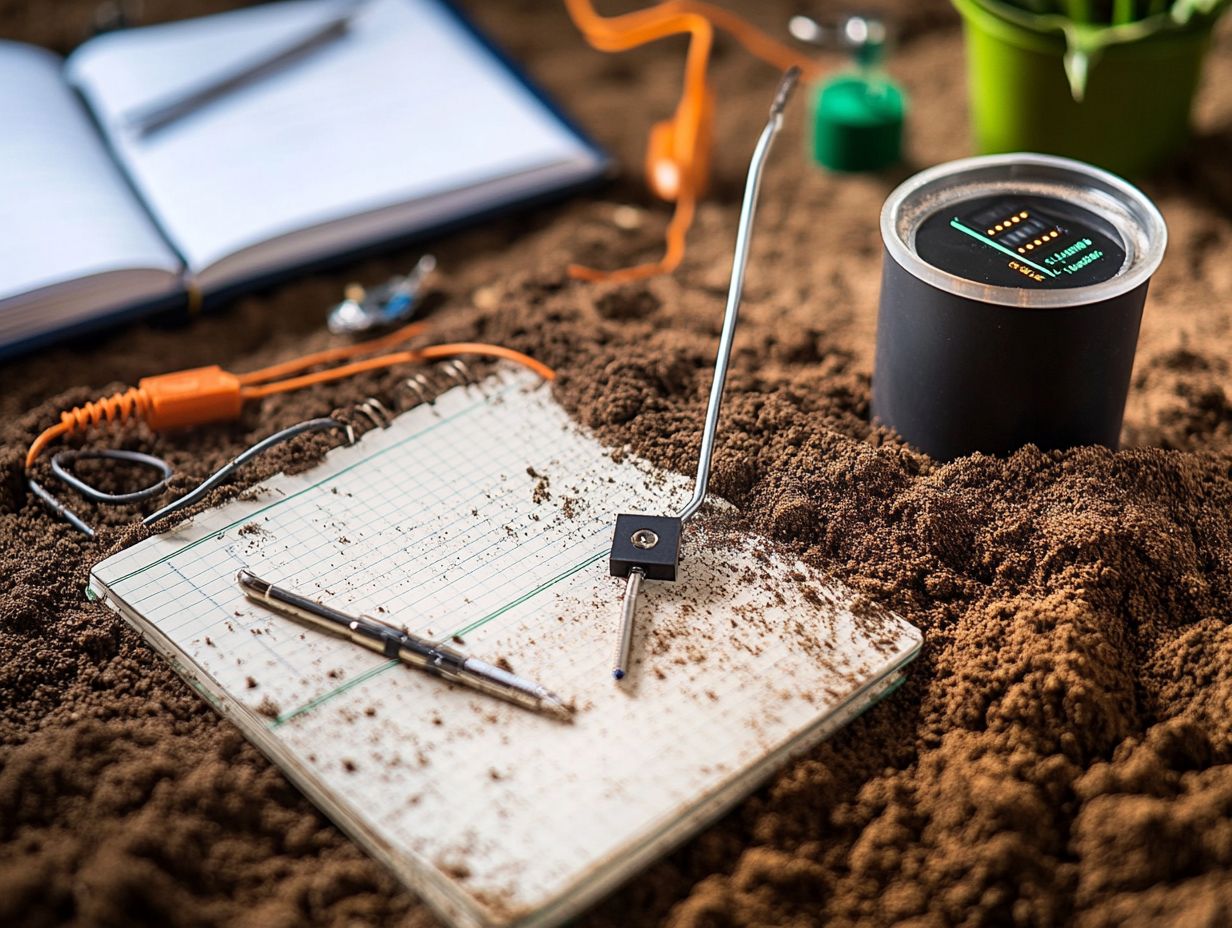
To create your own DIY soil moisture meter, you ll need a selection of electronic components and materials. Start with a soil moisture sensor and stainless steel probes for durability.
You ll also need battery packs for power and hookup wire for connections. Don t forget an LM393 comparator, which helps measure signals accurately.
List of Necessary Supplies
Creating an effective DIY soil moisture meter requires essential supplies, including components for assembly, circuit design materials, and the right tools for soldering.
You ll need connectors to ensure seamless connections between components. Resistors manage the flow of current to keep the circuit running smoothly.
Incorporating protective materials, like non-conductive foam and hot glue, is vital for protecting sensitive electronics from moisture and short-circuiting.
A well-structured plan for assembly will help you place each component strategically, enhancing functionality and preventing mishaps.
With these supplies, you can confidently build a reliable tool for measuring soil moisture levels.
Step-by-Step Guide to Building a Soil Moisture Meter
Get excited to build your very own soil moisture meter with this simple guide! You ll go through each stage of the process, from circuit design to troubleshooting challenges during assembly.
Instructions and Tips for Assembly
Follow these clear instructions and tips to integrate your moisture sensor into a functional DIY soil moisture meter.
Begin by gathering all components, including the moisture sensor, microcontroller, and connecting wires. Ensure each part is free from damage or corrosion, as even minor issues can disrupt functionality.
Start with the moisture sensor, placing it accurately in the soil and securing it firmly to prevent movement during testing.
Next, connect the sensor to the microcontroller, following the pinout documentation closely. Double-check the wiring for proper connections and use color-coded wires for clarity.
Now, power up the system and calibrate the sensor for accurate readings, making adjustments based on different soil conditions.
Using and Maintaining Your Soil Moisture Meter
Effectively using and maintaining your soil moisture meter involves mastering sensor calibration and interpreting visual feedback from readings.
This knowledge is essential for achieving optimal performance and providing your plants with the precise care they need.
Best Practices for Accurate Readings
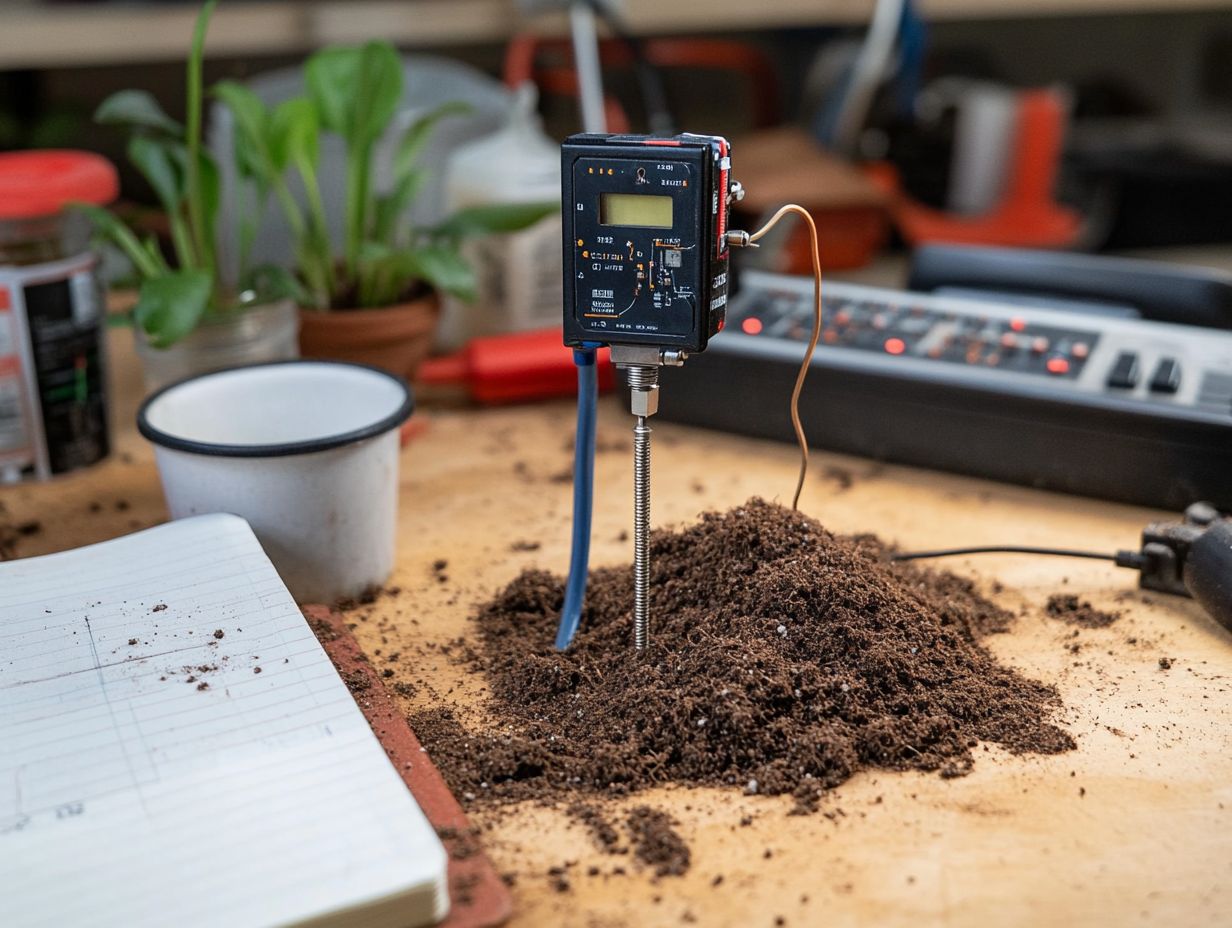
To get accurate readings from your soil moisture meter, place it in areas that reflect your plants’ conditions, ideally at root depth where moisture is critical.
Timing is important. Take readings at various times of the day to uncover fluctuations in moisture levels due to evaporation and temperature changes.
For the best results, avoid measuring immediately after watering; let the soil settle first. Take multiple readings from different spots to understand soil moisture variation.
By following these guidelines, you’ll help maintain optimal soil health and plant vigor.
Start building your soil moisture meter today and learn how to use moisture meters for plants to give your plants the care they deserve!
Alternative Methods for Measuring Soil Moisture
Discover exciting ways to track your soil’s moisture levels beyond just sensors! In addition to soil moisture sensors, you have access to a variety of alternative methods for measuring soil moisture. These range from traditional gardening tools to advanced electrical assembly techniques that offer precision and reliability.
Comparing DIY Methods to Commercial Options
When you compare DIY methods, such as utilizing galvanized nails or temperature sensors, to commercial options for measuring soil moisture, you’ll uncover a variety of advantages and disadvantages.
These differences are particularly noticeable in terms of cost-effectiveness and the accuracy of moisture gauges.
DIY soil moisture meters might catch your eye if you relish hands-on projects and are keen on saving a few bucks. Crafted from simple materials, these homemade devices can be customized to meet your specific gardening needs.
They provide a unique way to keep tabs on soil conditions.
Commercial products often include advanced features like digital displays and integrated sensors, delivering higher precision. However, this sophistication does come with a steeper price tag.
Both options offer valuable insights into soil moisture levels. Ultimately, it s up to you to weigh the appeal of customization against the reliability and sophistication that professional-grade products provide.
Frequently Asked Questions
What materials do I need to create a soil moisture meter?
To create a soil moisture meter, you will need:
- A resistive soil moisture sensor
- A microcontroller (such as an Arduino)
- A power source
- Connecting wires
- A breadboard
- A soldering iron
- A computer for programming the microcontroller
Can I use any type of resistive soil moisture sensor?
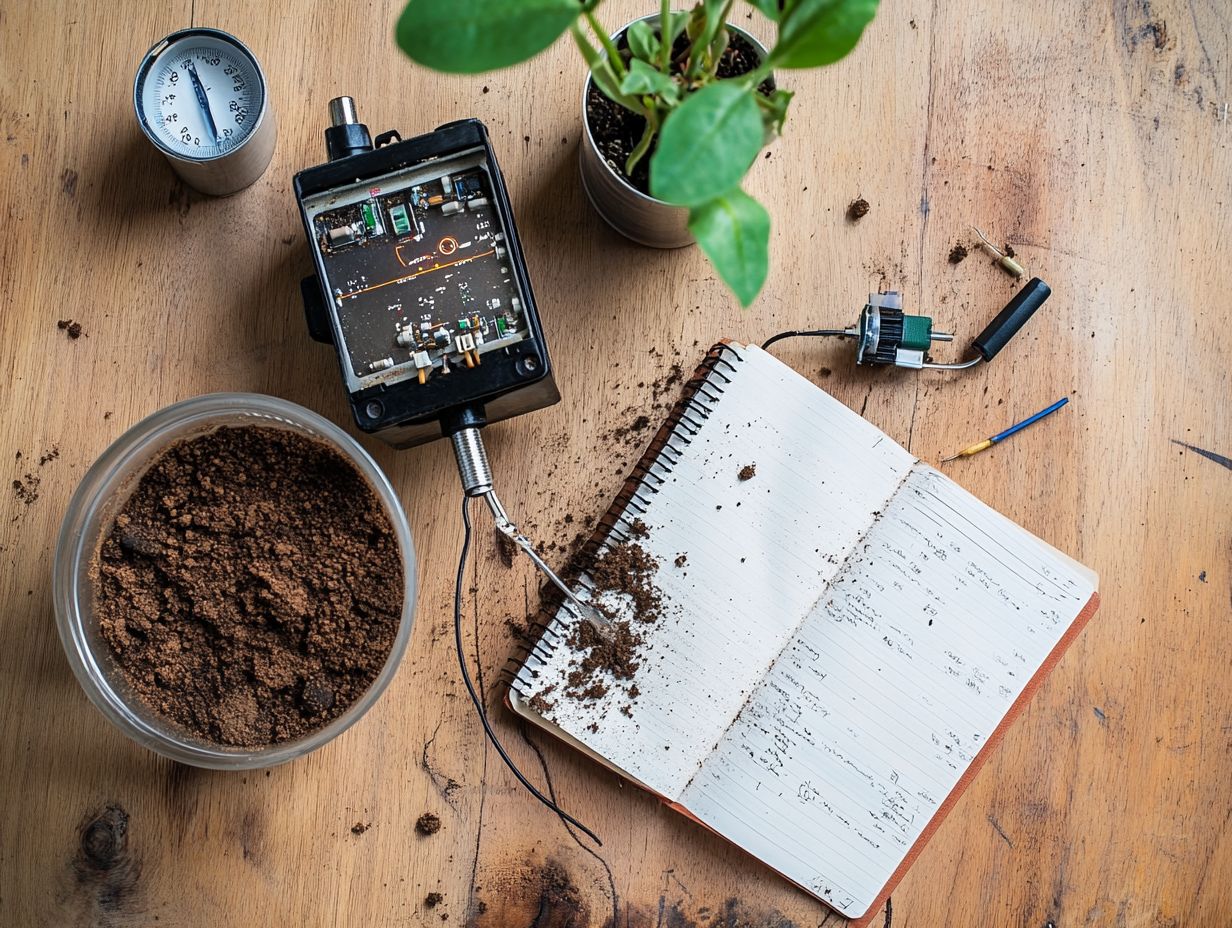
No, it is important to use a resistive soil moisture sensor specifically designed for soil. These sensors have longer electrodes and are coated with materials that prevent corrosion in wet soil, ensuring accurate readings.
How do I connect the sensor to the microcontroller?
The sensor should have two output pins that correspond to the two electrodes. Connect these pins to the analog input pins on the microcontroller using connecting wires. Refer to the sensor’s datasheet for specific wiring instructions.
Do I need to calibrate the soil moisture sensor?
Yes, it is crucial to calibrate the sensor before use. This involves taking readings in dry, wet, and ideal moisture conditions. Adjust the sensor’s readings accordingly to ensure accuracy for your specific soil type.
How do I power the soil moisture meter?
The easiest way to power the soil moisture meter is by using a USB cable connected to a computer or a USB power adapter. Alternatively, you can use a battery pack or a 9V battery for remote locations.
Can I use the soil moisture meter for different types of plants?
Yes, the same soil moisture meter can be used for different types of plants. However, consider the ideal moisture levels for each specific plant and adjust the sensor’s readings during calibration.
Ready to get started? Grab your materials today! Understanding soil moisture is crucial for plant health, so act now to ensure your plants thrive by measuring their moisture accurately!

